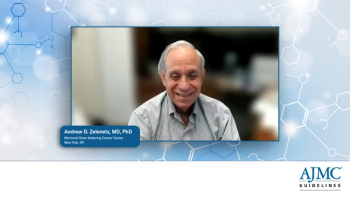
A Recommendation for Combining Smoking Cessation Intervention With Lung Cancer Screening
The Society for Research on Nicotine and Tobacco and the Association for the Treatment of Tobacco Use and Dependence have developed a position statement recommending access to smoking cessation interventions for smokers in the high-risk group who undergo a lung cancer screen.
The Society for Research on Nicotine and Tobacco (SRNT) and the Association for the Treatment of Tobacco Use and Dependence (ATTUD) have developed a position statement recommending access to smoking cessation interventions for smokers in the high-risk group who undergo a lung cancer screen.
Published in Cancer, the authors conducted a literature review that supports the health benefits associated with smoking cessation in the high-risk group. According to the American Association for Thoracic Surgery, the high-risk group is defined by individuals 55 to 79-years old with a 30 pack-year history of smoking. In the current statement, SRNT and ATTUD provide clinical recommendations for integrating evidence-based smoking-cessation treatment with lung cancer screening.
In 2014, the US Preventive Services Task Force finalized a “B” recommendation for annual lung cancer screenings with low dose computed tomography (LDCT) for those identified as being at high-risk for developing lung cancer. Subsequently, in 2015,
“Lung screening with low dose CT will save many lives by detecting lung cancer at earlier, treatable stages,” said Benjamin A. Toll, PhD, associate professor of public health at the Medical University of South Carolina, in a statement. Toll is a co-author on the paper. “However, it is critical that we provide tobacco treatment in conjunction with lung screening. Most patients will not have lung cancer, and we do not want this to be perceived as a ‘free pass’ to smoke. We also wanted to highlight the multiple benefits of smoking cessation.”
Based on their review of evidence, the authors have suggested the following:
- Smokers who present for lung cancer screening should be encouraged to quit smoking at each visit.
- Access to evidence-based smoking-cessation interventions should be provided to all smokers regardless of scan results, and motivation to quit should not be a necessary precondition for treatment.
- Follow-up contacts to support smoking-cessation efforts should be arranged for smokers.
- Evidence-based behavioral strategies should be used at each visit to motivate smokers who are unwilling to try quitting or reducing smoking, or to try evidence-based treatments that may lead to eventual cessation.
Toll believes, “Quitting smoking is the most important step patients can take to minimize risk for lung cancer and to also improve overall health. Combining smoking cessation with lung cancer screening will maximize the benefits of screening.”
Reference
Fucito LM, Czabafy S, Hendricks PS, Kotsen C, Richardson D, Toll BA. Pairing smoking-cessation services with lung cancer screening: a clinical guideline from the Association for the Treatment of Tobacco Use and Dependence and the Society for Research on Nicotine and Tobacco [published online February 2, 2016]. Cancer. 2016. doi: 10.1002/cncr.29926
Newsletter
Stay ahead of policy, cost, and value—subscribe to AJMC for expert insights at the intersection of clinical care and health economics.






































